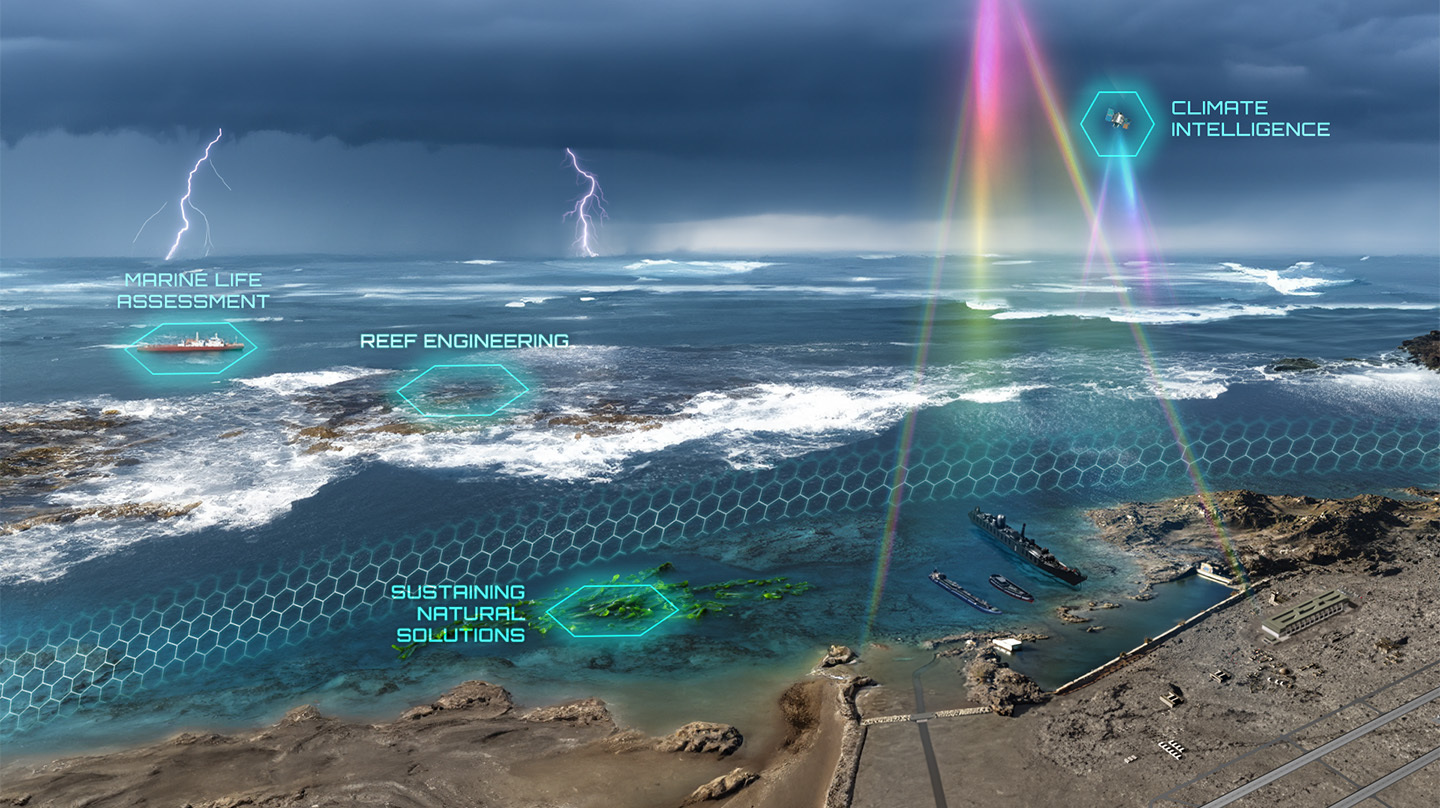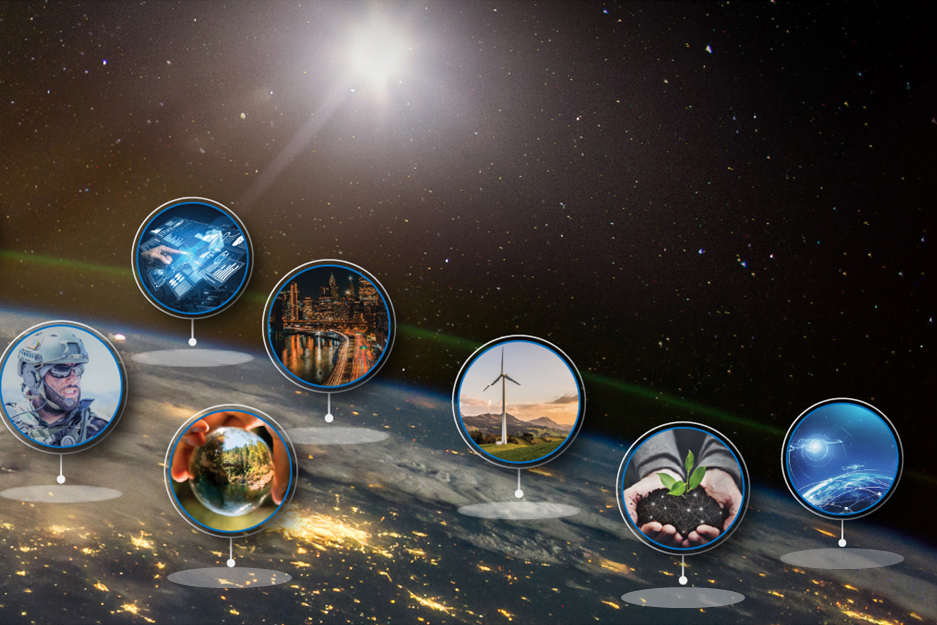News
Johns Hopkins APL Developing a Suite of Solutions to Address Coastal Challenges
When storms, hurricanes and tsunamis strike, the coastline offers essential protection for shoreside communities and critical infrastructure against tidal surge and flooding. Coastal disasters can destroy buildings and roads, shut down businesses and schools, cost cities and nations billions of dollars, and potentially lead to injuries or deaths.
As global water temperatures and sea levels rise, however, natural protection such as coral and oyster reefs is disappearing, making coasts more difficult to secure. Scientists at the Johns Hopkins Applied Physics Laboratory (APL) in Laurel, Maryland, built models to investigate solutions, such as creating oyster reefs, for minimizing damage along coasts. But when they found that oyster reefs could also increase erosion in certain scenarios — effectively, that one solution could lead to unintended consequences elsewhere — the APL researchers took a new approach.
“We don’t want to trade apples for oranges in terms of problems,” said Sarah Herman, program manager for biological and chemical sciences at APL. “We can’t rely on a single solution to establish coastal resilience. We need a suite of targeted solutions that can solve the entirety of the problem without creating new challenges.”
Cross-disciplinary teams at APL are combining expertise in materials engineering, marine biology, plant biology, computer science and modeling to create unique, impactful solutions to fortify coastal resilience. The teams will highlight their work during two conferences at APL: the Atlantic Coastal Resilience workshop on May 30 and the third National Workshop on Marine Environmental DNA (eDNA) from June 3 to 5.
“On their own, these projects address important challenges we face at the coastline,” said Herman. “Together, they provide defense in depth and a clearer picture of how we can enhance natural resources and improve long-term resilience.”
Anticipating and Avoiding “Tipping Points”
Anticipating how different resolutions to coastal issues impact each other is crucial to building a suite of effective solutions. “Our oceans are made up of complex, interconnected systems,” said Marisa Hughes, assistant program manager for human and machine intelligence at APL. “When there is a change to one system, there are significant, destabilizing ripple effects. We need to understand the interdependencies between these systems to develop effective, long-term solutions.”
Two APL staff members, artificial intelligence (AI) expert Jennifer Sleeman and oceanographer Jay Brett, lead a team that is developing an AI scientific discovery assistant named Causal-Cascading AI Tipping-Point Neuro-symbolic Intervention and Prediction (CATNIP). This system aims to understand how climate “tipping points” — critical thresholds that, once crossed, could change the state of the natural climate system — can trigger cascading responses.
CATNIP builds on the success of an earlier project for the Defense Advanced Research Projects Agency (DARPA) AI-assisted Climate Tipping-point Modeling program. The work includes a generative adversarial network (TIP-GAN) that learns to predict what could tip the Atlantic Meridional Overturning Circulation (AMOC), an important climate system of ocean currents that circulates warm water from the South Atlantic to the colder North Atlantic. If the AMOC were to slow or collapse, there could be consequences for food security, sea levels, delicate ecosystems and the Arctic.
The program was the first demonstration that AI can be used as a climate modeling assistant, where researchers can run experiments by asking the AI climate modeling assistant natural language questions, similar to using a large language model. CATNIP extends this capability to examine the tipping points of coral reefs, sea-ice melt and sea-level rise so it can study how tipping points are interconnected and interventions that could mitigate individual and cascading tips.
CATNIP’s new coral reef model looks at how factors such as temperature, carbon dioxide levels, wave energy and pollution affect reef populations and local flooding, which in turn can lead to food insecurity, infrastructure damage and population displacement.
“Before, we were addressing a simple question,” Brett explained, “but we now want to get to questions that involve multiple parts, like if we reach a state of bleached or dead coral, what would need to happen for the coral to recover, and how did the AI get its result?”
Reversing the Loss of Coral Reefs
With their ability to slow waves and reduce coastal erosion, coral reefs are critical for mitigating the effects of rising sea levels. Yet worldwide, they’re disappearing. Last summer’s record-high ocean temperatures, for example, led to a massive coral bleaching event in the Florida Keys, creating die-offs that preliminary data suggests left just one of five surveyed reef sites with sustained populations of certain coral species.
While the CATNIP team is modeling events to understand coral tipping points, other teams at APL are working in parallel to develop methods to support coral settlement, reverse coral loss and improve coral thermal resilience.
Jenny Boothby, a biomaterials engineer, led a project in collaboration with the University of Miami for DARPA’s Reefense program to develop a unique biocompatible hydrogel that can adhere to underwater structures. As coral larvae spawn, the team encapsulates the new larvae into the protective gel and attaches them directly to artificial structures underwater. The hydrogel provides a method to deliver nutrients and support the coral until they become self-sustaining.
In a separate internally funded project, APL biologists are developing a food additive material that would stop coral polyps from expelling their symbiotic algae during a heat wave. The additive delivers a snippet of genetic material to adult coral to mitigate coral bleaching. This messenger RNA, or mRNA, blocks chemical stress signals and acts like a vaccine against heat stress.
Enlisting eDNA to Understand Ecosystems
Warming oceans are hurting more than just coral; they’re jeopardizing all types of marine ecosystems and habitat for fish. APL researchers are leveraging eDNA — the genetic material organisms slough off as they move through their environment — to better understand how these ecosystems and marine organisms are responding.
“eDNA helps detect the unseeable,” said Hayley DeHart, a genomics researcher at APL. “We don’t always know the effects of climate change, but by studying genetic signatures, we can learn which organisms are in an environment and when there are unexpected changes in their movement.”
DeHart is part of an APL team developing a low-cost eDNA analysis tool to collect samples and then process and analyze the data. Compared with traditional data collection, eDNA is faster, cheaper and less labor intensive. Recently, the team deployed its eDNA tool in Antarctica aboard Lindblad Expeditions’ National Geographic Resolution.
“It’s amazing to see where eDNA has progressed in the past five years,” said DeHart. “What started as a question into whether we could even get DNA from water or air samples has developed into tools being actively used in the field. As we look ahead, we’re asking how the community can ensure eDNA is used responsibly for completing environmental impact assessments.”

